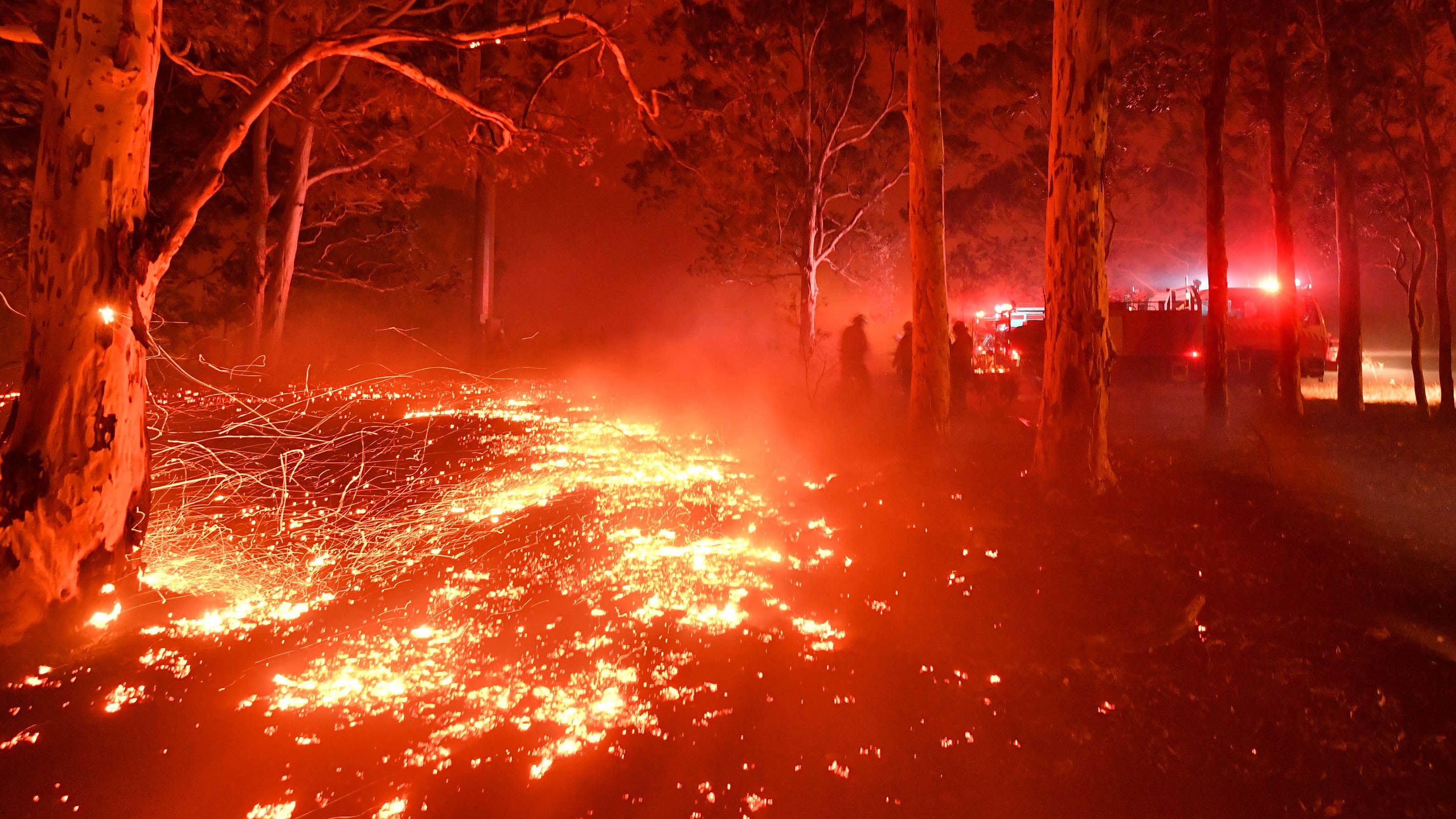Important Tips for Bushfire Management to Make Certain Fire Protection

Recognizing Bushfire Threat Degrees
Comprehending the differing degrees of bushfire danger is important for reliable preparation and preparation in mitigating prospective threats to buildings and lives. Bushfire threat levels are generally classified based on aspects such as weather, fuel accessibility, topography, and historical fire behavior. By comprehending these risk areas, people and degrees can proactively implement strategies to minimize vulnerability and improve resilience in the face of prospective bushfire events.
The first level of bushfire risk is reduced threat, where the likelihood of a bushfire taking place and causing significant damage is marginal. Risky degrees signify a substantial threat, with conditions favorable to fast fire spread and extreme fire actions.
Understanding these bushfire threat degrees allows stakeholders to customize their preparedness and feedback actions accordingly, making certain a efficient and positive method to bushfire management.
Establishing a Defensible Area
Reliable bushfire monitoring starts with establishing a defensible area around properties to enhance protection versus possible fire risks. A defensible space is a barrier zone that creates an obstacle between a framework and the surrounding combustible greenery. This space works as a critical line of protection, giving firemens a safe location to run and assisting to decrease the threat of a fire infecting the property.
When developing a defensible room, it is necessary to consider the design of the home and the bordering landscape. Clearing up plants, particularly extremely combustible plants, within a certain span of the residential or commercial property can assist protect against the fast spread of fires. Additionally, preserving a well-irrigated area around the property can further boost its defensibility.
Normal maintenance of the defensible room is critical to ensure its efficiency. This includes trimming looming branches, getting rid of dead greenery, and keeping the location free of debris. By investing time and effort into creating and preserving a defensible room, homeowner can considerably enhance their opportunities of safeguarding their homes and properties during a bushfire.
Applying Fireproof Landscaping
When making landscapes to minimize the risk of bushfires, including fire-resistant aspects is crucial for boosting residential or commercial property security and lowering fire risks. Select plants with high dampness material, reduced oil web content, and very little dead vegetation to minimize the danger of fire spread.

Creating an Emergency Situation Evacuation Plan
Creating an extensive emergency situation emptying strategy is essential for guaranteeing the safety and health of individuals throughout potential bushfire events (Bushfire Management Plan). A reliable discharge strategy should detail clear treatments to comply with in case of a bushfire threat, consisting of marked evacuation routes, setting up factors, and interaction protocols
To start creating an emergency situation evacuation plan, it is important to assess the details dangers and vulnerabilities of your place. Recognize numerous emptying paths that cause risk-free locations away from the fire, considering variables such as surface, road access, and possible risks. Establish communication networks to alert locals of an impending emptying, using methods such as sirens, message signals, or door-to-door alerts.
Consistently review and exercise the discharge plan with all homeowners or area members to make certain everybody understands their obligations and roles. Conduct drills to evaluate the effectiveness of the strategy and make any necessary adjustments. By having a well-prepared emptying plan in position, you can boost the chances of a risk-free and orderly emptying during a bushfire emergency situation.
Maintaining Fire Safety Equipment
After developing a detailed emergency emptying prepare for bushfire incidents, it is necessary to prioritize the routine maintenance of fire security equipment to make certain optimum functionality and readiness. Routine upkeep of fire security tools such as fire extinguishers, smoke alarm, fire alarms, and lawn sprinkler is crucial in guarding lives and residential or commercial property throughout a bushfire. Performing regular examinations, testing, and servicing of these gadgets by qualified professionals is essential to guarantee they are in functioning order when needed.
Fire extinguishers need to be checked frequently for pressure levels, noticeable damage, and correct capability. Smoke detectors must have their batteries changed a minimum of annually and go through regular monthly screening to guarantee they are functional. Fire alarms and lawn sprinkler should be examined occasionally to confirm they are connected and functioning correctly. Furthermore, it is very important to keep fire safety and security devices obtainable, unblocked, and clearly labeled for very easy identification during an emergency. By vigilantly keeping fire safety and security equipment, individuals can improve their readiness and action capacities in case of a bushfire.
Final Thought
To conclude, effective bushfire monitoring includes comprehending danger levels, developing defensible spaces, executing fireproof landscape design, creating evacuation strategies, and keeping fire safety tools. By complying with these vital ideas, individuals can make certain far better fire security and security for their residential or commercial properties and areas. It is very important to focus on aggressive steps to minimize the risks associated with bushfires and to be planned for emergencies.
By recognizing the subtleties of bushfire risk degrees, developing defensible areas, carrying out fireproof landscape design, creating thorough evacuation plans, and making certain the maintenance of fire security tools, individuals and communities can substantially bolster their strength versus the ravages of wildfires - BAL Report. Bushfire Management Plan These pointers are not only important for protecting versus prompt fire risks however likewise for fostering lasting fire protection approaches that can make a substantial distinction in the face of escalating bushfire dangers
High-risk levels signify a significant threat, with problems favorable to quick fire spread and severe fire habits. Regular upkeep of fire safety devices such as fire extinguishers, smoke detectors, fire alarm systems, and sprinkler systems is important in safeguarding lives and property during a bushfire.In conclusion, efficient bushfire administration includes comprehending threat levels, creating defensible rooms, implementing fireproof landscape design, establishing discharge strategies, and keeping fire security tools.
Comments on “Strategizing for Safety And Security: Establishing an Effective Bushfire Management Plan”